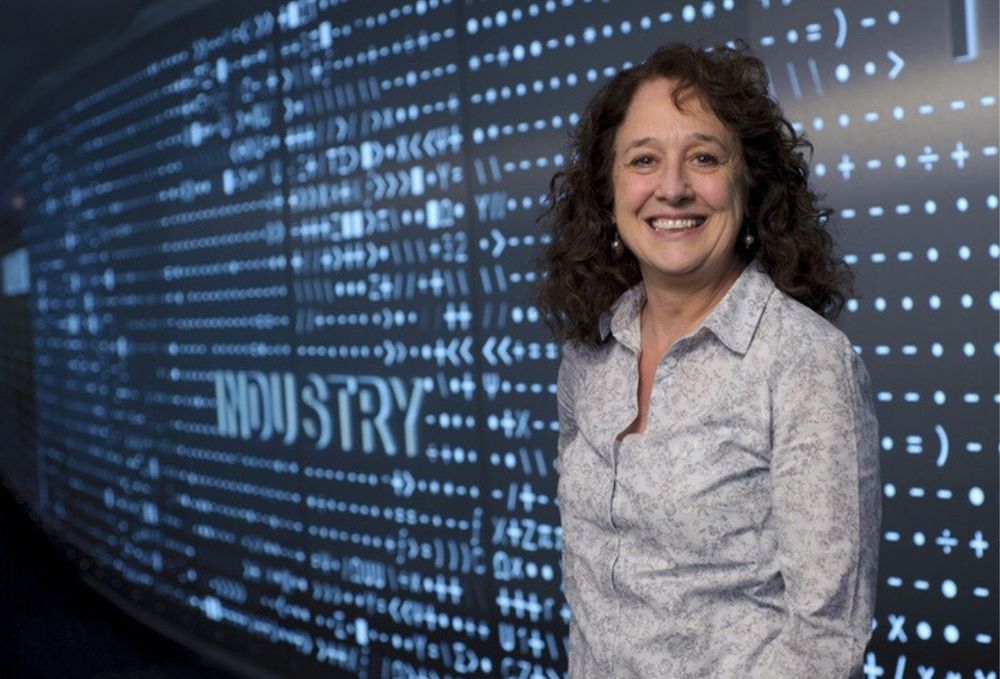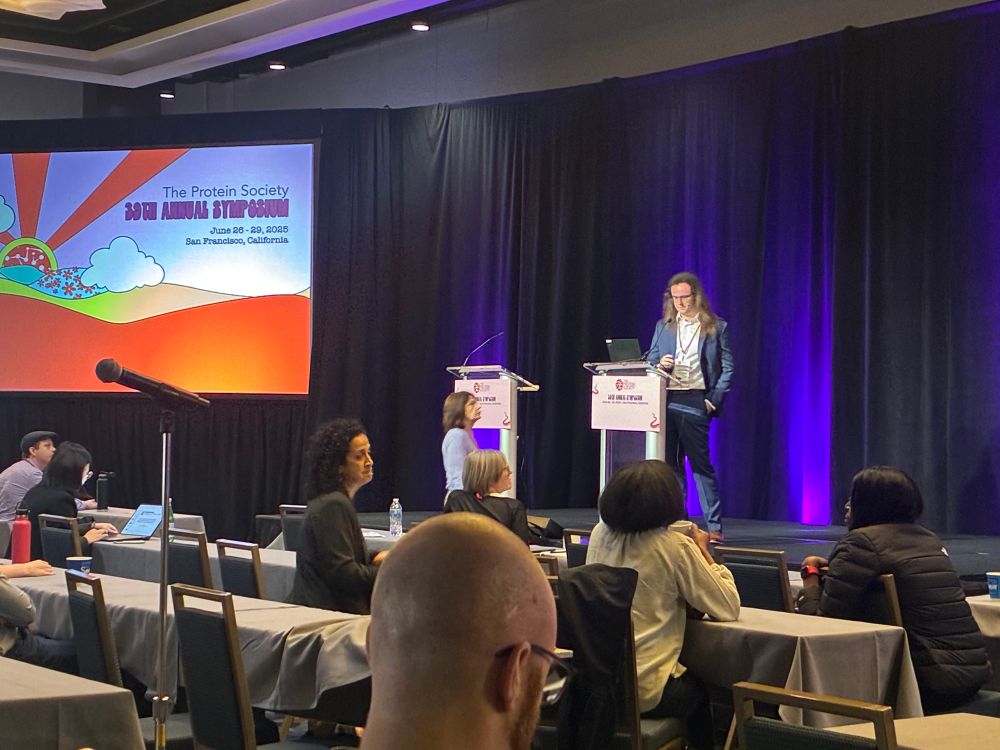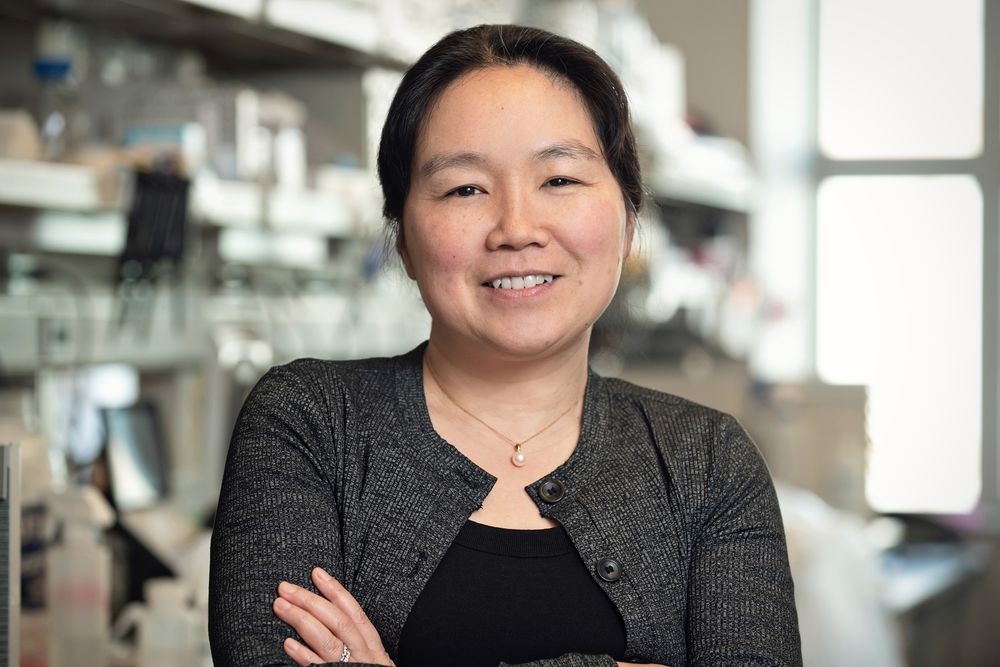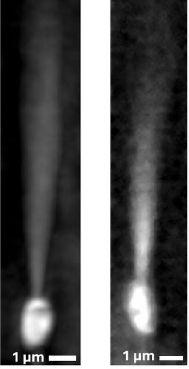
Andrew Savinov
@biosavinov.bsky.social
Biophysicist using single-molecule & high-throughput methods to interrogate sequence-structure-function. K99 fellow at MIT w/ Gene-Wei Li and Stan Fields; PhD w/ Steve Block at Stanford.
Pinned
www.pnas.org
Happy to announce that our paper on systematically discovering peptides to inhibit protein-protein interactions in living cells is out now @pnas.org: www.pnas.org/doi/10.1073/....
@MITBiology @hhmi.bsky.social
See thread on the updated preprint for details: x.com/bioSavinov/s...
@MITBiology @hhmi.bsky.social
See thread on the updated preprint for details: x.com/bioSavinov/s...
Thrilled to contribute to this exciting work on protein binder design together w/ @hannes-stark.bsky.social
, Felix Faltings, Regina Barzilay, Tommi Jaakkola, and co. We applied BoltzGen to design novel antimicrobial peptides targeting DNA gyrase based on inhibitory protein fragments. (1/n)
, Felix Faltings, Regina Barzilay, Tommi Jaakkola, and co. We applied BoltzGen to design novel antimicrobial peptides targeting DNA gyrase based on inhibitory protein fragments. (1/n)
Excited to release BoltzGen which brings SOTA folding performance to binder design! The best part of this project is collaborating with a broad network of leading wetlabs that test BoltzGen at an unprecedented scale, showing success on many novel targets and pushing the model to its limits!

October 27, 2025 at 12:39 PM
Thrilled to contribute to this exciting work on protein binder design together w/ @hannes-stark.bsky.social
, Felix Faltings, Regina Barzilay, Tommi Jaakkola, and co. We applied BoltzGen to design novel antimicrobial peptides targeting DNA gyrase based on inhibitory protein fragments. (1/n)
, Felix Faltings, Regina Barzilay, Tommi Jaakkola, and co. We applied BoltzGen to design novel antimicrobial peptides targeting DNA gyrase based on inhibitory protein fragments. (1/n)
Reposted by Andrew Savinov
Happy to share that this work is now published in @biophysj.bsky.social! doi.org/10.1016/j.bp...
In developing embryos, cells move a lot! Plenty of that movement is random. Is random cell mixing a feature or bug for tissue patterning? Turns out, it’s both! Excited to share the 1st preprint from my postdoc w/ Sean Megason @seanemcgeary.bsky.social and Allon Klein. 1/20 doi.org/10.1101/2025...
October 23, 2025 at 4:30 PM
Happy to share that this work is now published in @biophysj.bsky.social! doi.org/10.1016/j.bp...
Reposted by Andrew Savinov
So honored to be speaking today at the Stanford.Berkeley.UCSF Next Generation Faculty Symposium! Hope to see you there! (Zoom registration link below)
Incredibly excited for this year's iteration of the Next Generation Faculty Symposium on 9/10/25! This is a fantastic opportunity to hear 10 minute talks describing fantastic cutting-edge science from researchers preparing to launch a faculty search. Please register (link below) & forward widely :)
🗓️Join us for the 4th Stanford.Berkeley.UCSF Next Generation Faculty Symposium on 9/10/25!
We highlight the work of 18 exceptional early-career scientists across biomedical sciences.
Register and more information below:
www.berkeleystanfordnextgensymposium.com/speakersalumni
We highlight the work of 18 exceptional early-career scientists across biomedical sciences.
Register and more information below:
www.berkeleystanfordnextgensymposium.com/speakersalumni
September 10, 2025 at 2:01 PM
So honored to be speaking today at the Stanford.Berkeley.UCSF Next Generation Faculty Symposium! Hope to see you there! (Zoom registration link below)
Reposted by Andrew Savinov
Friendly reminder that the deadline to submit an abstract for talk at #cellbio2025 is TOMORROW, Wednesday, September 3, 2025 at 9 PM ET! Please consider submitting to our minisymposia "Physical Cell Biology from Molecules to Organisms (more details in the repost)
Excited to announce our minisymp. “Physical Cell Biology from Molecules to Organisms” #CellBio2025 w/ Hernan Garcia and @atmolines.bsky.social! Have an interesting story on how physical cell properties are controlled, coordinated across scales, or contribute to development and disease? (1/3)
September 2, 2025 at 7:51 PM
Friendly reminder that the deadline to submit an abstract for talk at #cellbio2025 is TOMORROW, Wednesday, September 3, 2025 at 9 PM ET! Please consider submitting to our minisymposia "Physical Cell Biology from Molecules to Organisms (more details in the repost)
Check out this exciting new minisymposium at ASCB!
Excited to announce our minisymp. “Physical Cell Biology from Molecules to Organisms” #CellBio2025 w/ Hernan Garcia and @atmolines.bsky.social! Have an interesting story on how physical cell properties are controlled, coordinated across scales, or contribute to development and disease? (1/3)
August 4, 2025 at 3:57 PM
Check out this exciting new minisymposium at ASCB!
Reposted by Andrew Savinov
Congratulations to Barbara Imperiali, the Class of 1922 Professor of Chemistry and Biology, who has been elected as a Fellow of the Royal Society, the United Kingdom’s national academy of sciences.
chemistry.mit.edu/chemistry-ne...
chemistry.mit.edu/chemistry-ne...

July 2, 2025 at 2:22 PM
Congratulations to Barbara Imperiali, the Class of 1922 Professor of Chemistry and Biology, who has been elected as a Fellow of the Royal Society, the United Kingdom’s national academy of sciences.
chemistry.mit.edu/chemistry-ne...
chemistry.mit.edu/chemistry-ne...
Reposted by Andrew Savinov
The @berlowlab.bsky.social kicking off the next session at #PS39
If you missed his talk, Jake Simmons and Jamie Do of the Berlow lab will both be presenting posters at the afternoon session!
If you missed his talk, Jake Simmons and Jamie Do of the Berlow lab will both be presenting posters at the afternoon session!

June 26, 2025 at 6:15 PM
The @berlowlab.bsky.social kicking off the next session at #PS39
If you missed his talk, Jake Simmons and Jamie Do of the Berlow lab will both be presenting posters at the afternoon session!
If you missed his talk, Jake Simmons and Jamie Do of the Berlow lab will both be presenting posters at the afternoon session!
Reposted by Andrew Savinov
We found that cells use emergent collective memory—arising from simple chemical reactions—to outperform physical limits of detecting chemical gradients. Curious how? 1/n
8 min talk: www.youtube.com/watch?v=A7XH...
bioRxiv: www.biorxiv.org/content/10.1...
#biophysics #cellbiology
8 min talk: www.youtube.com/watch?v=A7XH...
bioRxiv: www.biorxiv.org/content/10.1...
#biophysics #cellbiology

Local collective memory from ratiometric signaling outperforms cellular gradient sensing limits
YouTube video by Debraj Shubham Ghose
www.youtube.com
May 5, 2025 at 10:11 AM
We found that cells use emergent collective memory—arising from simple chemical reactions—to outperform physical limits of detecting chemical gradients. Curious how? 1/n
8 min talk: www.youtube.com/watch?v=A7XH...
bioRxiv: www.biorxiv.org/content/10.1...
#biophysics #cellbiology
8 min talk: www.youtube.com/watch?v=A7XH...
bioRxiv: www.biorxiv.org/content/10.1...
#biophysics #cellbiology
Excited to be at the @bostonbacteria.bsky.social Meeting this year!
I'll be a panelist at the AI in biology breakout session on Tuesday 6/10 after lunch, in Hall A -- together with @microyunha.bsky.social and M.S. Suryateja Jammalamadaka.
Come join us for what should be a great discussion!
I'll be a panelist at the AI in biology breakout session on Tuesday 6/10 after lunch, in Hall A -- together with @microyunha.bsky.social and M.S. Suryateja Jammalamadaka.
Come join us for what should be a great discussion!
June 9, 2025 at 3:02 PM
Excited to be at the @bostonbacteria.bsky.social Meeting this year!
I'll be a panelist at the AI in biology breakout session on Tuesday 6/10 after lunch, in Hall A -- together with @microyunha.bsky.social and M.S. Suryateja Jammalamadaka.
Come join us for what should be a great discussion!
I'll be a panelist at the AI in biology breakout session on Tuesday 6/10 after lunch, in Hall A -- together with @microyunha.bsky.social and M.S. Suryateja Jammalamadaka.
Come join us for what should be a great discussion!
Reposted by Andrew Savinov
Whitehead Institute Member Yukiko Yamashita, who studies how genetic information is passed from parents to offspring, has been elected to the National Academy of Sciences. Full story on our website: wi.mit.edu/news/yukiko-...

April 30, 2025 at 1:31 PM
Whitehead Institute Member Yukiko Yamashita, who studies how genetic information is passed from parents to offspring, has been elected to the National Academy of Sciences. Full story on our website: wi.mit.edu/news/yukiko-...
Reposted by Andrew Savinov
So excited to see this live! Awesome work from
@giannatbusch.bsky.social on the concept of population-based synergy—using cell-to-cell heterogeneity to uncover new therapeutic vulnerabilities!
@giannatbusch.bsky.social on the concept of population-based synergy—using cell-to-cell heterogeneity to uncover new therapeutic vulnerabilities!
Excited to share our new work on the distinct drug sensitivity profiles of heterogeneous therapy-resistant melanoma cells! @arjunraj.bsky.social www.biorxiv.org/content/10.1... (1/10)

Heterogeneous therapy-resistant cancer cells have distinct and exploitable drug sensitivity profiles
Resistance to targeted therapies is a significant clinical problem, but eliminating resistant cancer cells has proven difficult. One potential reason for this difficulty is heterogeneity in the resist...
www.biorxiv.org
April 28, 2025 at 8:22 PM
So excited to see this live! Awesome work from
@giannatbusch.bsky.social on the concept of population-based synergy—using cell-to-cell heterogeneity to uncover new therapeutic vulnerabilities!
@giannatbusch.bsky.social on the concept of population-based synergy—using cell-to-cell heterogeneity to uncover new therapeutic vulnerabilities!
Reposted by Andrew Savinov
Super excited to share a new preprint from our lab on design of small-molecule binding proteins using neural networks! The paper has a bit of everything. A new graph neural network, new design algorithms, and experimental validation. www.biorxiv.org/content/10.1...
🧵🧪
🧵🧪

Zero-shot design of drug-binding proteins via neural selection-expansion
Computational design of molecular recognition remains challenging despite advances in deep learning. The design of proteins that bind to small molecules has been particularly difficult because it requ...
www.biorxiv.org
April 28, 2025 at 3:22 PM
Super excited to share a new preprint from our lab on design of small-molecule binding proteins using neural networks! The paper has a bit of everything. A new graph neural network, new design algorithms, and experimental validation. www.biorxiv.org/content/10.1...
🧵🧪
🧵🧪
Reposted by Andrew Savinov
I'm the biggest fan of Rikki. Elegant physics. Breathtaking biology.
If you're looking for a seminar speaker...she's a fantastic communicator.
Congrats for the new work, @rikkigarner.bsky.social!
If you're looking for a seminar speaker...she's a fantastic communicator.
Congrats for the new work, @rikkigarner.bsky.social!
In developing embryos, cells move a lot! Plenty of that movement is random. Is random cell mixing a feature or bug for tissue patterning? Turns out, it’s both! Excited to share the 1st preprint from my postdoc w/ Sean Megason @seanemcgeary.bsky.social and Allon Klein. 1/20 doi.org/10.1101/2025...
April 24, 2025 at 4:11 PM
I'm the biggest fan of Rikki. Elegant physics. Breathtaking biology.
If you're looking for a seminar speaker...she's a fantastic communicator.
Congrats for the new work, @rikkigarner.bsky.social!
If you're looking for a seminar speaker...she's a fantastic communicator.
Congrats for the new work, @rikkigarner.bsky.social!
Check out this extremely thought-provoking work on tissue fluidity, cell motility, and patterning from @rikkigarner.bsky.social! Certainly changes how I think about development...
In developing embryos, cells move a lot! Plenty of that movement is random. Is random cell mixing a feature or bug for tissue patterning? Turns out, it’s both! Excited to share the 1st preprint from my postdoc w/ Sean Megason @seanemcgeary.bsky.social and Allon Klein. 1/20 doi.org/10.1101/2025...
April 24, 2025 at 1:22 PM
Check out this extremely thought-provoking work on tissue fluidity, cell motility, and patterning from @rikkigarner.bsky.social! Certainly changes how I think about development...
Also happy to share the @MITBiology news brief highlighting our @NIH-funded basic research which paves the way to systematically develop novel inhibitors and drugs, such as peptide-based antibiotics: biology.mit.edu/a-sum-of-the....
February 11, 2025 at 1:27 PM
Also happy to share the @MITBiology news brief highlighting our @NIH-funded basic research which paves the way to systematically develop novel inhibitors and drugs, such as peptide-based antibiotics: biology.mit.edu/a-sum-of-the....
Happy to announce that our paper on systematically discovering peptides to inhibit protein-protein interactions in living cells is out now @pnas.org: www.pnas.org/doi/10.1073/....
@MITBiology @hhmi.bsky.social
See thread on the updated preprint for details: x.com/bioSavinov/s...
@MITBiology @hhmi.bsky.social
See thread on the updated preprint for details: x.com/bioSavinov/s...
www.pnas.org
February 5, 2025 at 1:44 PM
Happy to announce that our paper on systematically discovering peptides to inhibit protein-protein interactions in living cells is out now @pnas.org: www.pnas.org/doi/10.1073/....
@MITBiology @hhmi.bsky.social
See thread on the updated preprint for details: x.com/bioSavinov/s...
@MITBiology @hhmi.bsky.social
See thread on the updated preprint for details: x.com/bioSavinov/s...
Reposted by Andrew Savinov
Researchers engineered Escherichia coli bacteria to express an enzyme derived from sea sponges, which polymerizes bioglass from silica, allowing the bacteria to self-assemble lenses that focus light into narrow, intense beams. In PNAS: www.pnas.org/doi/full/10....

December 19, 2024 at 9:27 PM
Researchers engineered Escherichia coli bacteria to express an enzyme derived from sea sponges, which polymerizes bioglass from silica, allowing the bacteria to self-assemble lenses that focus light into narrow, intense beams. In PNAS: www.pnas.org/doi/full/10....
Reposted by Andrew Savinov
December 13, 2024 at 5:50 PM
Reposted by Andrew Savinov
⚠️ Tag with Caution ⚠️
New preprint led by Kerstin Dörner in Maria Hondele’s lab with contributions from Fan Cao on our side on the effects of tagging with FPs and peptides on condensation and phase separation 🧪
TL/DR: It’s complicated
See more:
doi.org/10.1101/2024...
New preprint led by Kerstin Dörner in Maria Hondele’s lab with contributions from Fan Cao on our side on the effects of tagging with FPs and peptides on condensation and phase separation 🧪
TL/DR: It’s complicated
See more:
doi.org/10.1101/2024...

October 6, 2024 at 1:54 PM
⚠️ Tag with Caution ⚠️
New preprint led by Kerstin Dörner in Maria Hondele’s lab with contributions from Fan Cao on our side on the effects of tagging with FPs and peptides on condensation and phase separation 🧪
TL/DR: It’s complicated
See more:
doi.org/10.1101/2024...
New preprint led by Kerstin Dörner in Maria Hondele’s lab with contributions from Fan Cao on our side on the effects of tagging with FPs and peptides on condensation and phase separation 🧪
TL/DR: It’s complicated
See more:
doi.org/10.1101/2024...

